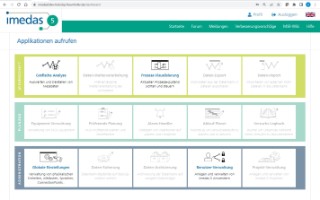
Dashboard of the IMEDAS 5 Systems.
IMEDAS is an in-house software development for measurement, control and regulation of test benches.
more info
Dashboard of the IMEDAS 5 Systems.
IMEDAS is an in-house software development for measurement, control and regulation of test benches.
more info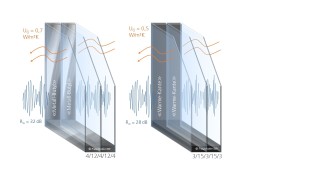
Comparison of the thermal insulation and sound insulation properties of thermal glazing.
Although modern thermal glazing reduces a building’s energy requirements, it also has an impact on sound insulation.
more info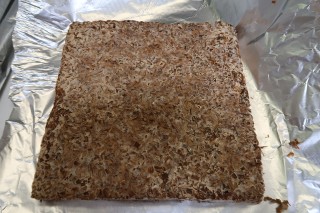
Fungal adhesive prototype made from cattail (lat. Typha) bound by the Ganoderma fungus.
To achieve a biological transformation, material flows must be considered as a whole and biointelligent solutions found for them. Closed material cycles are essential. For the insulating material, biological raw materials as well as residual materials are bonded together by mycelial growth.
more infoThe overall objective of the CoolDown project is to collect and validate suitable measures for the rapid and practicable transformation of heating networks with a focus on the secondary side and (existing) buildings. To this end, the technical, regulatory and economic requirements will be identified and evaluated in detail.
more info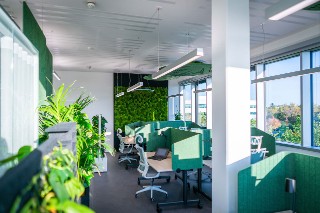
Sustainable acoustic and visual privacy at office workplaces.
At present, there is a high vacancy rate in office buildings due to people working remotely. This is a major economic and ecological problem: air-conditioned, illuminated office space stands empty while people work from home in less energy-efficient living spaces. For offices to be used, they must offer employees clear advantages. The classic multi-space concept, an open-plan office with various workplace modules, still leaves a lot to be desired, especially when it comes to privacy.
more infoAcoustic panels are used to improve the acoustics in rooms with a high proportion of sound-reflecting surfaces. To make them look more attractive, the surface of these panels is covered with a slotted or micro-perforated wooden veneer. This regular surface design narrows the width of the absorption spectrum and impairs the high-quality, natural impression of the wood surface. In the present project, this technical problem is solved by a novel brushing process that opens the wood veneer along the grain, creating irregular holes.
more infoIn the GreenAcoustics project, a digital tool that takes a more comprehensive approach is to be designed and implemented as a prototype. The tool will be based on Fraunhofer IBP's existing reverberate technology, which uses not only the usual acoustic parameters, but also the shape of the room and the uneven distribution of absorbers in the room to calculate the reverberation time.
more infoIn the “Bassorber” project, a comprehensive calculation tool developed at IBP is used to accelerate and optimize the development of absorbers. The tool not only allows the absorption coefficients of almost all absorber structures to be optimized, but also the interaction between the absorbers.
more infoIn the Digital Room Acoustics Planning (DIGAKUST) project, a software solution is being developed that automatically calculates relevant key acoustic figures and makes them audible in a simulation environment in real time by transferring technical room parameters (e.g. size of the room, position of objects in the room, material properties of the surfaces). The aim is to provide users with an easy-to-use tool that captures interiors in great detail, automatically assigns object properties, allows the geometry of the room to be individually configured via an intuitive user interface, and makes it possible to experience the resulting changes in room acoustics in real time. Thus, the impact of structural or design changes on the overall acoustics becomes immediately apparent.
more info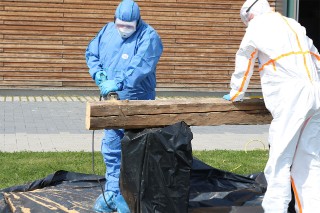
Sawing work on a historic timber beam contaminated with lindane.
The CycloPlasma project combines an innovative adsorbent material and plasma technology to decontaminate wooden structures containing lindane and PCP. The CycloPlasma technique is a revolutionary concept when it comes to renovating and modernizing historical buildings. The method can be applied to all buildings in private and public ownership.
more info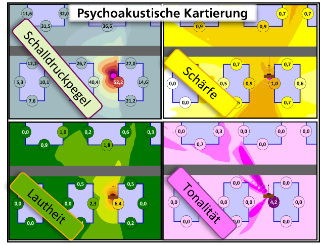
Visualisierung der Kennwerte Schalldruckpegel, Schärfe, Lautheit und Tonalität.
Psychoacoustics help to predict sound immission so that the actually perceived noise load can be mapped with a view to improving noise control.
more info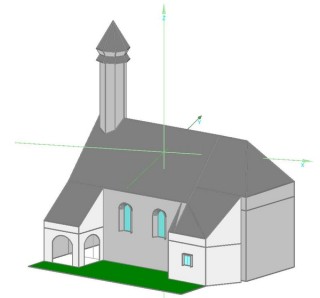
Model of Roggersdorf Church.
In the project "Climate for Culture" the influence of climate change on cultural assets in Europe is determined with 27 partners.
more info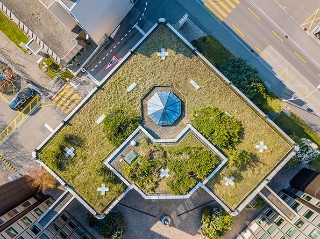
Green roofs increase the proportion of unsealed land in urban areas. Rainwater can seep into them and is stored instead of running off mostly as surface water.
In this project, the existing range of test facilities and simulation options at Fraunhofer IBP are supplemented in order to record rainwater retention capacity of green roofing structures.
more info
The structure of cattails makes them ideal for use in building materials.
Development and utilization of an innovative organic-based building material made of cattail and geopolymer.
more info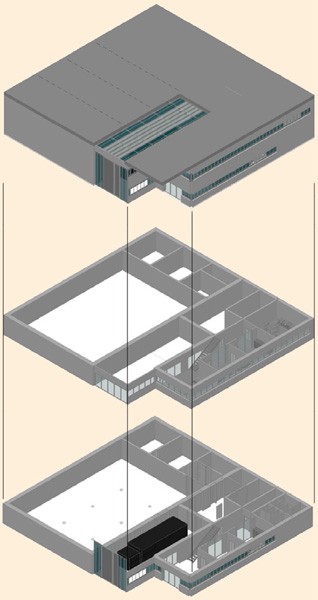
Individual modular elements.
There is a lack of suitable depots that meet the requirements of sustainability and energy efficiency as well as those of conservation.
more info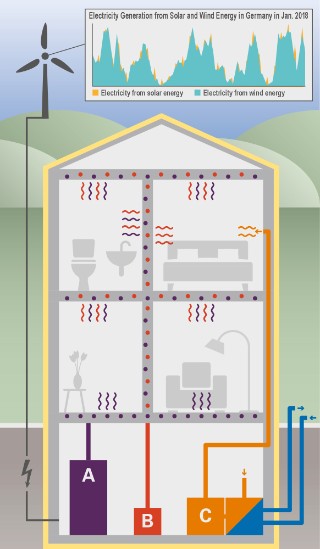
Possible solutions for using a building with wind-powered heating 2.0 with a large hot water storage tank (A), building component activation (B) and a central high-temperature stone storage tank (C).
The aim of the research study is to develop concepts for »Buildings heated by wind-power«, which are heated during periods of strong wind only.
more info
Sanssouci Palace Park - input data for the PALM-4U simulation (left) and simulated heat load on a hot summer's day (right).
Cultural assets are critical socio-cultural infrastructures whose services contribute to Germany's economic development and competitiveness and promote the community. However, the increase in extreme weather events due to climate change poses a threat to these infrastructures, such as historic buildings & gardens and cultural landscapes. The BMBF-SiFo project “KERES” therefore studied future extreme weather events and their effects on our cultural heritage in Germany, and used models to examine these scenarios.
more info
PACFAST enables the carbon footprint / LCA of packaging to be calculated efficiently.
Life cycle assessments are generally relatively complex and, depending on the objective and scope of study, call for a high level of expertise. Our collaboration with Institut cyclos-HTP has resulted in an important milestone on the way to calculating the carbon footprint (CF) of packaging quickly and efficiently. The application, called PACFAST (Packaging Carbon Footprint Fast and Standardised), uses an automatically generated file in CHI-RA that contains relevant packaging specifications for calculating the carbon footprint of the packaging in question.
more info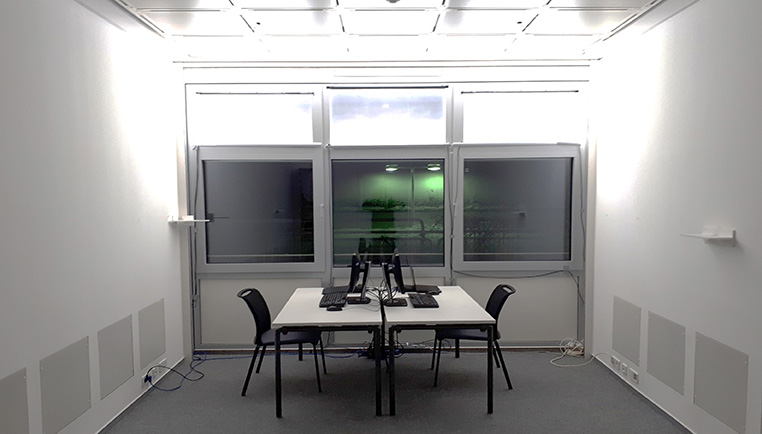
Artificial skylight in twin rooms
The aim of the project is to improve the building energy performance, the life cycle balance and the quality of indoor environments by using micro-structured optical components for daylighting and electrical lighting applications.
more info